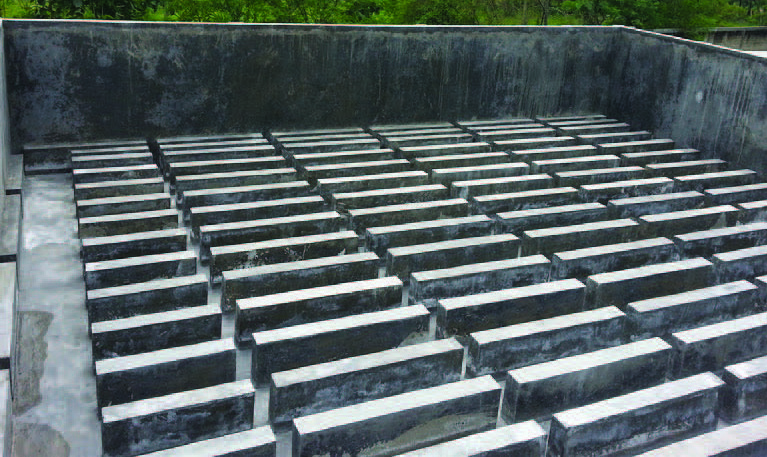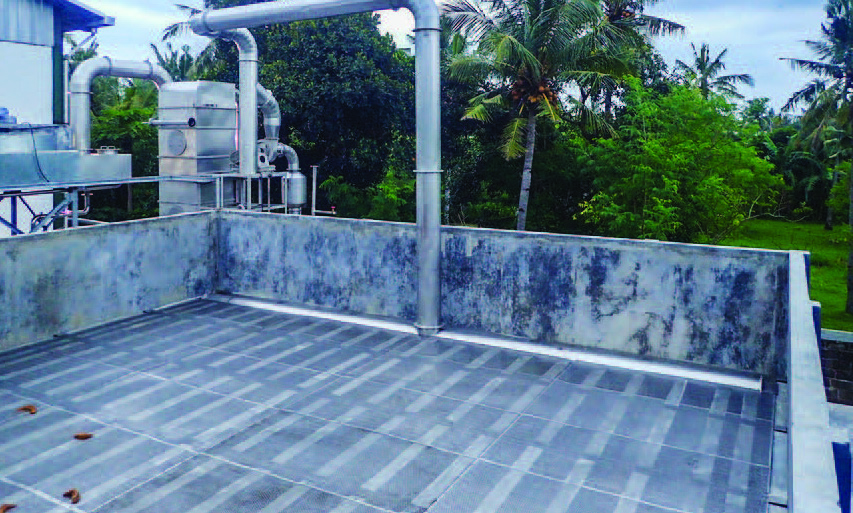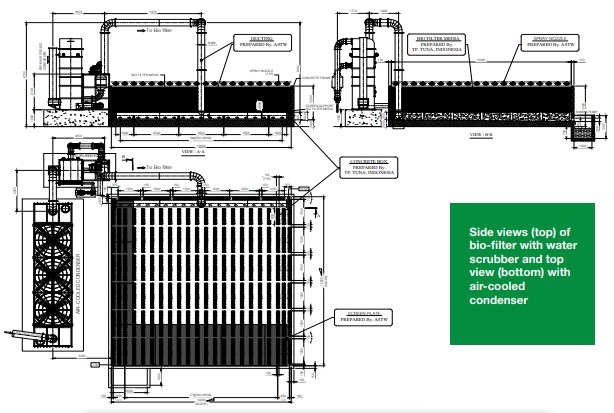
BIO FILTER
A & S THAI WORKS CO., LTD
The bio-filter is installed to reduce the smell from rest gas and air from protein processing plants like rendering (meat and bone) and fishmeal plants.
The design is normally a large (typically 10 x 20 x 2 meters or much larger) basin like a “swimming pool” where the smelly rest gas is slowly filtered from the bottom through a layer of moist “bio media” like coconut husks, tree (pine) bark, rice husk or similar bio materials after having been cooled down and condensed to less than 40 deg C.
Simple bio filters may be a heap of media on the ground with a pipe going to the center of the heap to release the smelly rest gas and air.
The naturally occurring bacteria in the filter will “eat” the remaining smell molecules. This sounds strange but it works.
The rest gas comes from condensers of vapor from cookers and dryers, point suction of air/vapor from machines and bins and free air from inside the building.
If the temperature is higher than 40 deg C the bacteria will die and there will be no deodorizing effect.
The media must be moist to function and there is installed a garden type sprinkler system all over the media that is turned on and off by a timer.
The size of the bio filter is calculated by retention time, this at the time the rest gas is in contact with media, typically 30 to 60 seconds. Sometimes there is installed a cross-flow water scrubber just before the bio filter to remove dust and moisten the rest gas.
ASTW can supply drawings for the filter basin and supply all mechanical components, blower, scrubber and ducting.
The bio filter is typically 2 meters deep where 0.5 meter is free space for the rest gas to distribute and 1.5 meter is filled with the media.
After some time, the filter material or bio media will turn into fertile earth mold and will have to be replaced, for bark this may take 4-5 years.
To study in detail read website: BIO FILTER, M887_Final Report ,– from Australian Rendering Industry






